Posted by Patrick Weiler on 07-03-2007 06:15 PM:
A Few More Turkey Photos
Here are a few miscellaneous photos, mostly of weavings, from our ICOC trip
to Turkey.
This one was a small chanteh-size khorjin on the wall of the
new fake rug factory in the Konya area. I think it is original Luri, but not
terribly old - maybe early to mid 20th century:
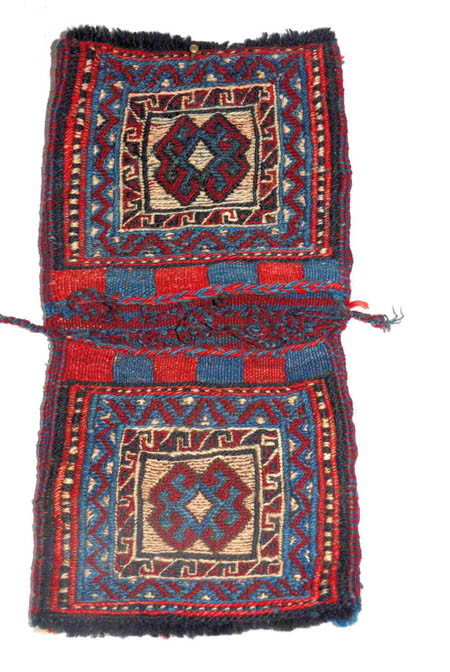
This next one could be Luri or
Bakhtiari or Afshar and is in the style of ladle bags - a "landscape" shaped
weaving folded over and sewn along one edge - making a container that still
retains one of its hanging cords. The whites are cotton:
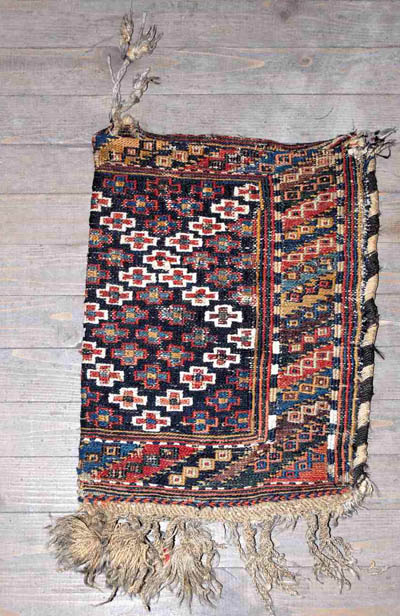
Here is the middle section of a
type of Luri rug that I do not own. And at the price of this one, I probably
never will. 
It is similar
to one in the first James Opie book. The colors are brilliant, the "handle" is
luxurious, the weaving excellent and the wool sumptuous. Other than that, it is
OK.
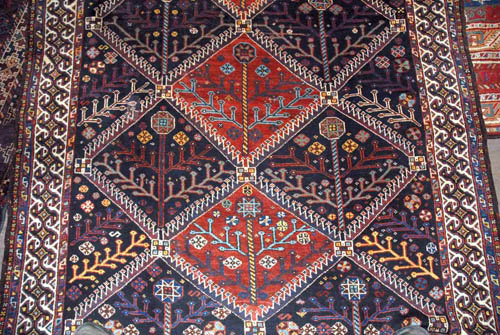
This one
is a Yomud-looking piece that was at the same place I bought the two Kizil
Juvals. I like the diagonal coloring of the tassles. It still has its back,
too:
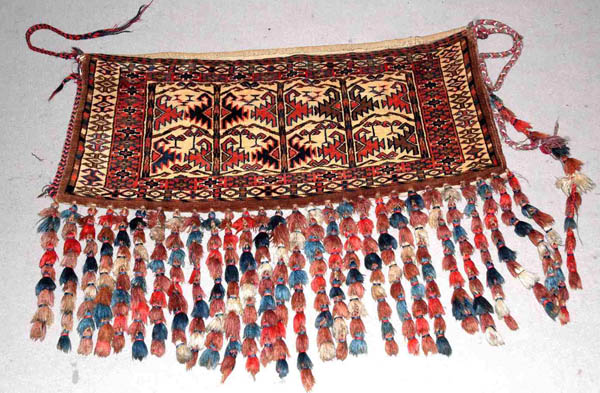
Now for
a change of pace, a couple of photos of tile work from the Topkapi
Palace:
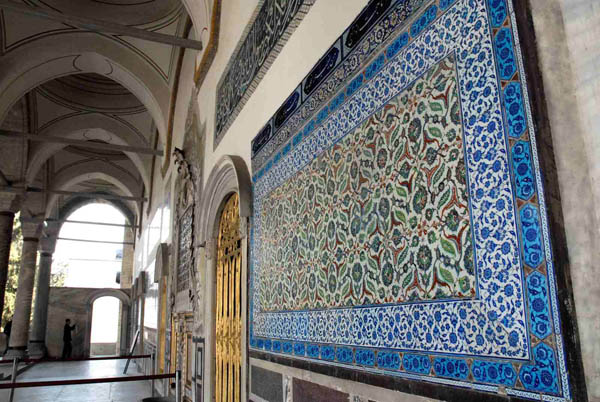
Notice the original Iznik "No Smoking" tile work,
too:
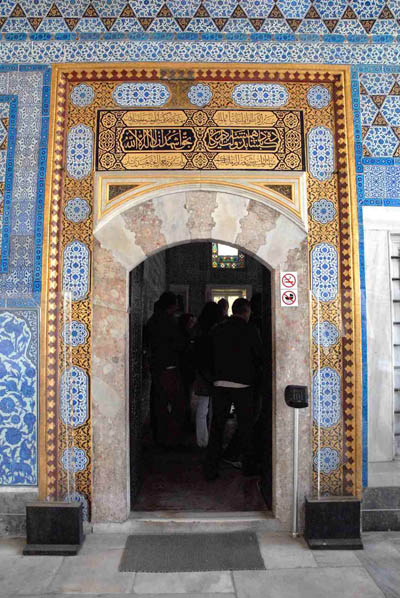
I had a
bit of trouble not buying this cute little piece. It had been a two-pile-face
chanteh and was unfolded. It has that haphazard Luri-look to it and good colors.
It was just not quite old enough and just a bit too expensive:
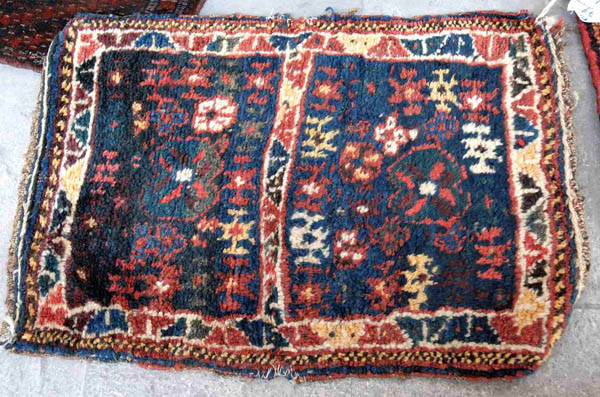
Finally, here is the
small Boteh-Tribe piece I did buy, resting atop a piece of ??? rug that another
friend purchased in Konya:
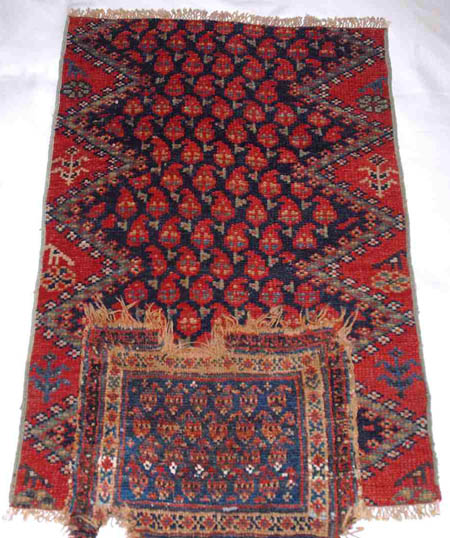
I am entertaining suggestions of what it may have been and its
attribution. (Except Baluch - If you think it is Baluch, go to the back of the
line)
Patrick Weiler
Posted by Richard Larkin on 07-08-2007 10:25 AM:
I resemble that remark!
Hi Patrick,
The fragment must be some Southwest Persian group, right?
Probably the small clique of the Boteh-Tribe moved to Niris by Shah Tamasp in
the XVIth century. To confirm that, though, I'd ask you. Of course, we need to
see the back, the knots, and the materials of the underlying weave.
Rich
Larkin
P. S: The drawing within the little panels of that Yomud piece
(with all the tassels) is a bit wild, no? I'm looking at those miniature
Turkoman style palm trees in there, and the double bird head candelabra in the
upper sections. Is that typical?
Posted by Patrick Weiler on 07-08-2007 04:05 PM:
Richard,
I did not get to closely check the construction of the ???
rug, I would have thought more NW Persian/Kurdish. It has symmetric knots but no
offset knotting and a flat back with no warp depression. If this is a section
from the middle of a rug with no medallions, it may have been part of a long
corridor rug.
The Yomud piece does have some interesting designs that are not
familiar from "typical" pieces - almost asmalyk-type designs.
Patrick
Weiler
Posted by Richard Larkin on 07-08-2007 05:29 PM:
Patrick,
I guess you are right about the NW Persian/Kurdish
attribution, especially if it is Turkish knotted. With that coloring (which I
love) and some of those decorative motives, I could have believed the Shiraz
region. Your surmise about the original long narrow format seems right,
too.
I hate to be a nerd about the thing, but the warp ends look like
cotton from a distance (in contrast, for example, to your Boteh-Tribe bagface).
Did you take note of that point?
__________________
Rich
Larkin








